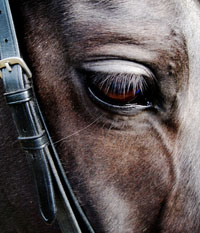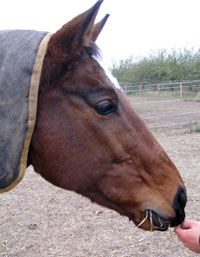Mud Fever also known as greasy heel and pastern dermatitis occurs when the pasterns remain persistently wet. The skin is softened and bacteria becomes trapped in the dirt and dead skin leading to inflammation, cracking of the skin and sores. Constant flexing and movement inhibits healing and the scabs that form provide more protien for the bacteria, such as Dermatophilus congolensis, Pseudomonas aeruginosa and Staphylococcus spp,to feed on and breed. Oozing scabs matt the hair and trap even more bacteria. Secondary bacteria infections may cause swelling.
Prevention of Mud Fever, although sometimes difficult especially in winter, is better than cure.
Top tips to prevent Mud Fever include:
Keeping your horse away from mud as much as possible by moving them off muddy fields, remember short grass is less wetting than long.
Try to prevent horses from standing in muddy gateways by fencing off the mud and feeding elsewhere.
Fence off any standing water.
Keep legs as dry as possible, light mud can be brushed off when dry. If mud needs to be hosed off do it quickly and dry the legs thoroughly with disposable paper towels. Cloth towels will quickly get covered with bacteria.
Dry pasterns with paper towels after riding.
Consider trimming feathers.
Barrier creams such as Sudacreme or a proprietary cream specifically for prevention of Mud Fever can be used on healthy dry skin but do not apply to wet skin. When applied to wet skin they are trapping moisture and bacteria.
Consider stabling susceptible horses, make sure bedding is clean and dry
The use of Mud Fever boots can help to prevent Mud Fever.
Check pasterns daily, at the first sign of Mud Fever treatment should be as follows:
Move the horse into a dry enviroment.
Remove scabs carefully with an antibacterial solution that contains chlorhexidine such as Hibiscrub or iodine such as Pevidine and dry, carefully and gently, using disposable paper towels.
Keep the area dry, water is the enemy in pastern dermatitis.
If swelling occurs or the pasterns are very inflammed and painful call the vet your horse may need a course of antibiotics and the vet may prescripe a corticosteriod or topical antibiotic cream.
Remember prevention is better than cure.





Comments